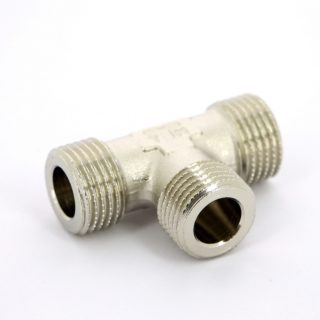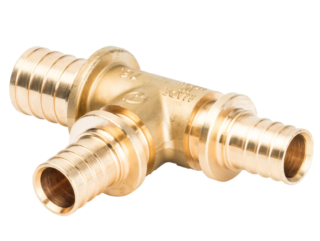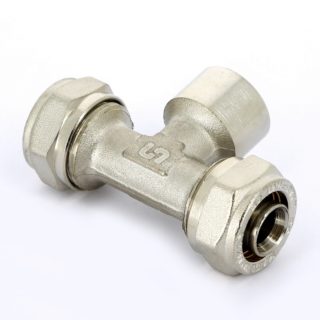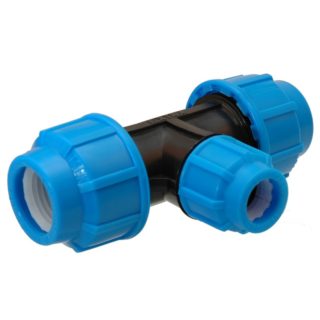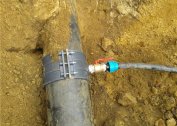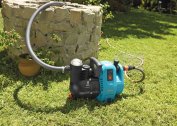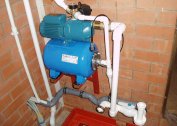The device of the water supply system in some cases involves a change in its direction or branching. In this case, a steel, cast-iron tee is used for water supply when the line is made of cast iron, steel or polymer fittings when installing a water pipe from plastic.
Definition and purpose
Water tee - this is one of the varieties of fittings, designed to complete, modernize the water supply. Using a cross or reinforcement (sometimes also called a tee), it is possible to change the direction of the line, divert a separate branch from it and, if necessary, transfer part of the water supply from one diameter to another, as well as from the polymer part of the system to the metal and vice versa. As an example, consider the need to supply water to a toilet bowl or washing machine.
Types of tees for water supply
Fittings are classified according to several parameters. First of all, products are distinguished by the material of manufacture:
- Metal plumbing tees. Steel, cast iron, brass, bronze. The first two types are often used for municipal construction of public highways. Steel and cast iron are durable, resistant to corrosion. As a rule, these types of fittings are mounted by welding or flange joints. Brass and bronze fittings are more often used in private construction. Both materials are strong, durable. The brass tee is also versatile. It can be placed not only on metal plumbing, but also on plastic.
- Polymer. These fittings are used exclusively indoors for the installation of a water supply system from PVC, HDPE or polypropylene pipes. Reinforcement is made of polyethylene, polypropylene and polyvinyl chloride. Plastic tees are easy to install, have a high indicator of tightness and durability.
Metal fittings are produced in one of several ways - welding, hot stamping or hydraulic stamping. The workpiece initially has the form of an electric-welded or seamless pipe. To arrange the ends of the reinforcement, use threading machines or end machines.
By the method of installation and connection, all tees are divided into the following types:
- Threaded. Mounted using internal or external threading.
- Welded. Subject to welding only. And it can be both metal fittings and polymer.
- Crimp. They are also called collet.
- Press fittings.
- Combined.
In terms of design features, experts divide all reinforcement into the following types:
- Equal passage fitting. The tee has three exits, all with equal cross-section.
- Transition fitting. Helps to branch the system, providing a different pipe diameter at one of the outlets. For example, the water supply to the washing machine can be carried out using a flexible hose of a smaller section than the entire water supply.
- Combined tees. They differ from the first two types by the presence of diverse threads at the exits. There may be two outside and one inside.
The diameter of the reinforcement starts from 15 mm to 1000 mm. You can choose a fitting for any pipe.
Special attention should be paid to a special fitting adapter with a tap. It allows for simultaneous branching of the line and the immediate presence of another water intake point. The constituent elements of a tee with a crane are a body, a ball valve, o-rings, a union nut, and a handle. Such fittings are placed on the water supply to washing household appliances. The main advantages of fitting with a tap are as follows:
- the ability to work at temperatures from -10 to +95 degrees;
- minimum weight - 100 gr.;
- possible diameters of branch pipes 15 and 20 mm;
- Designed to operate at system pressures up to 8 bar;
- the possibility of buying a crane with internal or external thread, which provides maximum convenience to the master at the time of installation;
- Long life up to 4,000 cycles.
A tee with a crane can be placed at any convenient angle.
Criterias of choice
The wizard, choosing a fitting for the water supply system, pays attention to the following parameters:
- The material of manufacture. It should in most cases coincide with the material from which the water pipes are made. An exception are lines consisting of both plastic and metal. Here they put a brass tee or plastic with a special adapter.
- Type of fitting depending on the purpose of installation. If a branching system with equal diameters is supposed, equal-through reinforcement is taken. If one water supply line will have a smaller cross-section, take the transition fitting. Combined will help to mount part of the water supply with different types of material and connection.
- Connection method. The wizard determines which method (welding, crimping, carving) is suitable for a particular case.
- The presence on the fitting of the manufacturer's marking and GOST. Since all elements for water supply have high requirements for strength and tightness, they are produced in accordance with established standards. If there are no GOST markings on the product, it is better to refuse it.
Be sure to request a sales receipt at the store. Based on it, you can return an inappropriate tee or exchange it for another.
Installation Principles
Installation of a plumbing fitting depends on how it is mounted. Fittings with a crane are mounted in the following sequence:
- The system completely shut off the water. This insures against leaks and riser emergencies.
- Measure the length of pipe that is to be removed under the tee. To do this, measure the length of the fitting from one edge to the other without regard to its thread. Under it, you need to leave the ends of the pipes so as not to cut out the excess.
- The intended portion of the system is removed.
- Clamping nuts are put on prepared parts.
- It remains to install the tee and tighten it with nuts.
The last stage of installation work is to connect a flexible hose. It is screwed onto the thread of the third fitting connector. When installing a tee, you can use the FUM tape as a sealant.
The collet fitting is installed as follows:
- The pipe is cut at the intended place and dents are trimmed with a calibrator. The cut must be done at an angle of 90 degrees with respect to the axis of the water line.
- Crimp rings and locknuts are put on the prepared sections of the tubes.
- Pipes are inserted into fittings.
- The contact between the tube and the nipple is tightened with a nut.
The press fitting is installed as follows:
- Cut the pipes in the intended place and align their gaps with a calibrator.
- Put on the ends of the line tee.
- Insert the sleeve into the crimp wrench.
- Cover it with a section of pipe with fittings and reduce the handle of the tool to the stop. Thus, the key crushes the sleeve, due to which the fitting is fixed.
Massive tees designed for installation on central highways are mounted using bolts or using welding. In the first case, the fitting can be dismantled. In the second, this is unacceptable.
